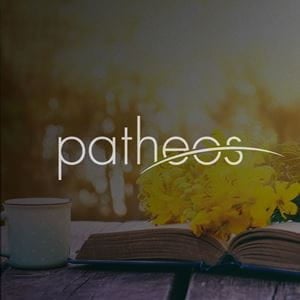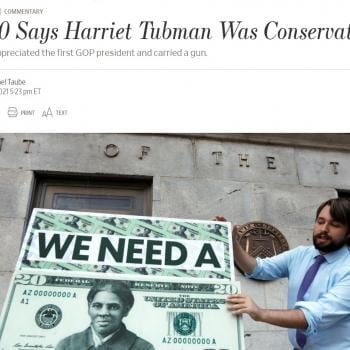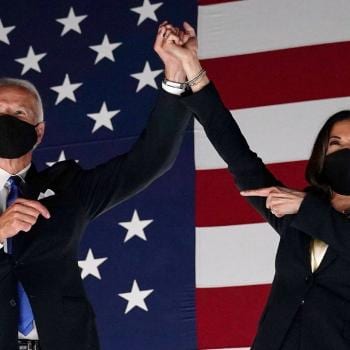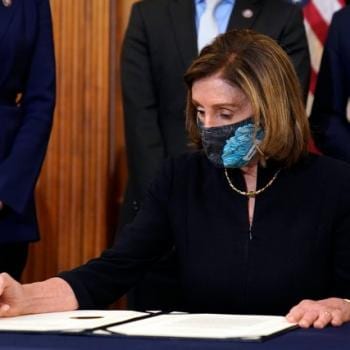Today, the electoral college has become a subject of much discussion. And it’s not surprising—for the first time in history, a presidential candidate has won the popular vote by nearly two million votes and yet lost the electoral college. We’ve had presidential candidates win the popular vote but lose the electoral college before, but never so dramatically. Conservatives have rushed to defend the electoral college—perhaps not surprising, given that their candidate won. Progressives, for their part, have grown critical of the system—some are calling for doing away with the electoral college altogether.
Today I want to focus on two points. First, the electoral college we have today is not the electoral college the founding fathers’ set up. The founding fathers could not have imagined a disagreement between the popular vote and the electoral vote, because such a thing could not have happened in the system they set up. Second, the creation of the electoral college was, at its inception, incredibly contentious. Many founding fathers, including such luminaries as James Madison, preferred the popular vote to an electoral college system. There was fierce disagreement even then.
The Founding Fathers’ Electoral College
The Constitutional Convention that met in the summer of 1787 may have created a new constitution, but this document needed to be ratified by at least nine states before it would go into force. Alexander Hamilton, James Madison, and John Jay wrote a series of essays now titled the Federalist Papers, explaining and defending the new constitution. Hamilton described the electoral college in Federalist No. 78:
It was desirable that the sense of the people should operate in the choice of the person to whom so important a trust was to be confided. This end will be answered by committing the right of making it, not to any preestablished body, but to men chosen by the people for the special purpose, and at the particular conjuncture.
It was equally desirable, that the immediate election should be made by men most capable of analyzing the qualities adapted to the station, and acting under circumstances favorable to deliberation, and to a judicious combination of all the reasons and inducements which were proper to govern their choice. A small number of persons, selected by their fellow-citizens from the general mass, will be most likely to possess the information and discernment requisite to such complicated investigations.
It was also peculiarly desirable to afford as little opportunity as possible to tumult and disorder. This evil was not least to be dreaded in the election of a magistrate, who was to have so important an agency in the administration of the government as the President of the United States. But the precautions which have been so happily concerted in the system under consideration, promise an effectual security against this mischief. The choice of SEVERAL, to form an intermediate body of electors, will be much less apt to convulse the community with any extraordinary or violent movements, than the choice of ONE who was himself to be the final object of the public wishes. And as the electors, chosen in each State, are to assemble and vote in the State in which they are chosen, this detached and divided situation will expose them much less to heats and ferments, which might be communicated from them to the people, than if they were all to be convened at one time, in one place.
If this sounds nothing like the electoral system we currently have, that would be because it is nothing like the electoral system we currently have. The only holdover from this system is that each state has a certain number of electoral votes. That the candidate that wins a state’s popular vote receives all of its electoral votes is new. That people vote for a presidential candidate rather than for an elector is new. That the people of each state select the electors is also new—early on, many states selected their electors via their legislatures rather than via a vote of the people; the Constitution allowed either. And—finally—that parties run presidential slates (the president and vice president together) rather than electors voting for whatever two individuals they felt were most qualified (without political affiliation) is new, too.
When we talk about the electoral college, we’re actually talking about a collection of different elements. As the electoral college currently functions, the people of each state vote for a presidential candidate; the candidate which receives the majority of a state’s popular vote receives all of that state’s electors. This is not how the electoral college functioned at the beginning—or how it was intended to function when the Constitution was ratified. Each state was to select electors (this selection would be made by either the legislature or the people) based not on party affiliation (the Founding Fathers did not intend for us to have political parties) but rather on the expectation of their good judgement. These electors would consider the qualifications and independently cast their votes for the two candidates they thought best (electors voted independently rather than as a state block).
I’ll explain in a bit why (and how) all these things changed. What I want to emphasize here is that when we say “electoral college” today we are not talking about the founding fathers’ electoral college. Instead, we are talking about a system changed almost beyond recognition from its original creation and intention. There is absolutely no guarantee that the founding fathers, if resurrected today, would approve of our current system, because it is not the system they created. Those defending our current system are not defending the electoral college the founding fathers created. They’re defending something new and different.
The Founding Fathers Were Not in Agreement
I often hear people talk about the Founding Fathers as though they were some sort of monolith. They were not. They were constantly disagreeing with each other. At the Constitutional Convention, some delegates argued that the Congress should select the President; others felt that would compromise the independence of the branches of government and could lead to chaos in Congress. Some supported the selection of electors while still others argued that the president should be selected by popular vote.
In the end, how the president would be elected was one of the most contentious matters addressed by the founding fathers that summer. There were 30 different votes on the topic held on 21 different days. Here are the minutes of James Madison’s testimony at the Continental Congress on July 25, 1787:
The option before us then lay between an appointment by Electors chosen by the people-and an immediate appointment by the people. He thought the former mode free from many of the objections which had been urged agst. it, and greatly preferable to an appointment by the Natl. Legislature. As the electors would be chosen for the occasion, would meet at once, & proceed immediately to an appointment, there would be very little opportunity for cabal, or corruption. … The remaining mode was an election by the people or rather by the qualified part of them, at large: With all its imperfections he liked this best. He would not repeat either the general argumts. for or the objections agst. this mode. He would only take notice of two difficulties which he admitted to have weight. The first arose from the disposition in the people to prefer a Citizen of their own State, and the disadvantage this wd. throw on the smaller States. Great as this objection might be he did not think it equal to such as lay agst. every other mode which had been proposed. He thought too that some expedient might be hit upon that would obviate it. The second difficulty arose from the disproportion of qualified voters in the N. & S. States, and the disadvantages which this mode would throw on the latter. The answer to this objection was 1. that this disproportion would be continually decreasing under the influence of the Republican laws introduced in the S. States, and the more rapid increase of their population. 2. That local considerations must give way to the general interest. As an individual from the S. States he was willing to make the sacrifice.
The first difficulty Madison mentions was solved by requiring electors to vote for no more than one candidate living in their state, but was ultimately rendered moot by the rise of political parties. The second difficulty Madison discusses—“the disproportion of qualified voters in the N. & S. States, and the disadvantages which this mode would throw on the latter”—is about slavery. The 3/5 clause, by which slaves were counted as 3/5 of a person for the purpose of representation, inflated southern power in the House. This advantage would not be replicated in a presidential election held by popular vote. Madison, though from the South himself, was fine with this—the sacrifice was worth it, he felt.
Elbridge Gerry disagreed with Madison’s support for a direct election of the president, however, because he believed the people were ignorant and not to be trusted with something as serious as a presidential election. “A popular election in this case is radically vicious,” Gerry stated. “The ignorance of the people would put it in the power of some one set of men dispersed through the Union & acting in Concert to delude them into any appointment.” Gerry wasn’t alone. Others, such as John Dickinson, sided with Madison, arguing that “an election by the people” was “the best & purist source.” James Wilson agreed, arguing for the popular vote on the grounds that “If we are to establish a national Government, that Government ought to flow from the people at large.” Governeur Morris viewed the executive branch as the voice of the people, selected by them to protect against “legislative tyranny.”
Ultimately, the matter was unresolved and the issue was thrown to the Committee of Eleven on Postponed Matters. This committee created our current system, which ultimately became part of our Constitution. Rather than having the president elected by Congress or through popular vote, the electoral college provided that the states would select electors who would then choose the president. It was an eleventh-hour compromise solution. It satisfied elitist concerns about the people’s capacity to select the president while simultaneously removing presidential selection from the hands of Congress and ensuring that the people were involved in the process (electors had to be common citizens, not elected officials).
How Did We Get Our Current System?
The electoral system outlined above wasn’t set up for political parties. The idea was that electors would choose a president from among various qualified politicians. However, the system did allow for each elector to select two candidates for president; this was to ensure that at least one politician could receive votes from the majority of the electors. With the rise of two competing political parties—which happened almost immediately—electors began treating this double-ballot provision as a vote for president and for vice president. This created some serious problems.
George Washington did not join a political party. He did not like political parties. However, while he was in office two competing political parties developed organically. Upon his leaving office, each political party put forward its two most popular figures, urging electors who were members of their party to select these individuals. Suddenly, which political party an elector belonged to became very, very important. Suddenly, people and legislatures began selecting electors not on the basis of their sound judgement but rather on the basis of their party affiliation. Suddenly, electors began pledging, beforehand, which candidates they would vote for. In other words, the system quickly ceased to function as intended.
The breakdown was pretty dramatic.
In 1796, Alexander Hamilton, a Federalist, sought to influence the election by convincing electors who had pledged themselves to the Democratic-Republican Thomas Jefferson to also vote for the Federalist Thomas Pinckney. This was because Hamilton disliked the leading Federalist candidate, John Adams, and hoped to see Pinckney elected instead. Hamilton’s plan was foiled when enough Federalist delegates voted for Adams but not Pinckney, offsetting Democratic-Republican electors who voted for Pinckney rather than Aaron Burr, the other prominent Democratic-Republican candidate.
Then there was the election of 1800. Democratic-Republican electors universally selected both Thomas Jefferson and Aaron Burr. One elector was supposed to leave Burr off to ensure that Jefferson would receive more votes than Burr, making Jefferson president and Burr vice president, but this was bungled and the election was ultimately thrown to Congress, which then had to choose between two candidates of the same party. Burr decided he wanted to be president, not vice-president, and things got very very messy. Congress ultimately had to weigh in on an inter-party conflict.
After the election of 1800, the nation’s leaders went back to the drawing board, because it was very clear this system was not working. The result was the 12th amendment. This amendment stipulated that electors would vote for one candidate for president, and one candidate for vice president, thus eliminating the sort of manipulation attempt ted by Hamilton in 1796 and by the Democratic-Republicans in 1800. Ever after, electors have voted for one of a number of competing party tickets rather than for two individual candidates.
But wait! This still doesn’t sound like the system we have today.
Initially, a number of states selected their electors via their legislatures. This is no longer the case. In 1868, the 14th amendment required states to allow the people to vote for the state’s electors; by this time, however, those states that had at one time selected their electors via the legislature had already moved away from this scheme. The last holdout was South Carolina, which persisted in having its legislature choose its electors until 1860.
Initially, the electoral vote could be split, some electors voting for each candidate. This is no longer the case. Whether to bind all of a state’s electors to vote for the winner of the popular vote is actually up to each individual state; it is not dictated by the Constitution. Why do states do this? A state’s voters tend to select a presidential candidate from the same party that controls the state’s legislature. At some point, legislators realized they could give their party a boost by tying all electoral votes to the state’s popular vote. And once one state did this, the others had to follow, or their candidate would be at a disadvantage. This is not—I repeat, not—required in the electoral college system, nor is it how the system was intended to function.
Initially, people voted for electors rather than for a president.
Check out this ticket distributed in Virginia in 1860:

If you wanted to vote for the Democratic ticket—Douglas/Johnson—you would vote for one of the electors listed on the sheet, depending on your district. Here’s another:

If you wanted to vote for the Republican ticket—Lincoln/Hamlin—and you lived in New York, you would vote for an elector from this list, depending on your district.
Today, we vote directly for a presidential ticket rather than for an elector. This is not how the founding fathers set up the electoral college system to function. And that, rather, is the point—what we refer to today when we speak of the “electoral college” is not the founding fathers’ electoral college. It is one that has strayed dramatically from its initial creation and intentions. It has become something else entirely.
Conclusion
I’ve heard many people argue, over the past month, that the founding fathers created the electoral system to ensure that candidates had to appeal to all regions of the country, and to all demographics. This is not the case. Many founding fathers preferred a national popular vote to the electoral system ultimately created—let’s not pretend this idea is new—while other founding fathers argued that the people were incapable of making so important a selection. The electoral college was a compromise solution—and its original form differed dramatically from its current form.
Let’s pause to ponder one very important point: Under the system the founding fathers created, it was literally not possible for the popular vote to come in conflict with the electoral vote because the people did not vote directly for the president.
I am by no means saying we should return to the system the founding fathers initially created. The founding fathers were not all-knowing, and the electoral college system they created was not designed for needs of the twenty-first century. In fact, their system didn’t even work for the eighteenth century. They had to amend it less than two decades after penning it. But let’s stop pretending that the electoral college system is the way it is today because it was intended to be that way, or meant to be that way, or designed to be that way. It wasn’t.
If the electoral college still has a function today, that function is post-hoc.
I have a Patreon! Please support my writing!















